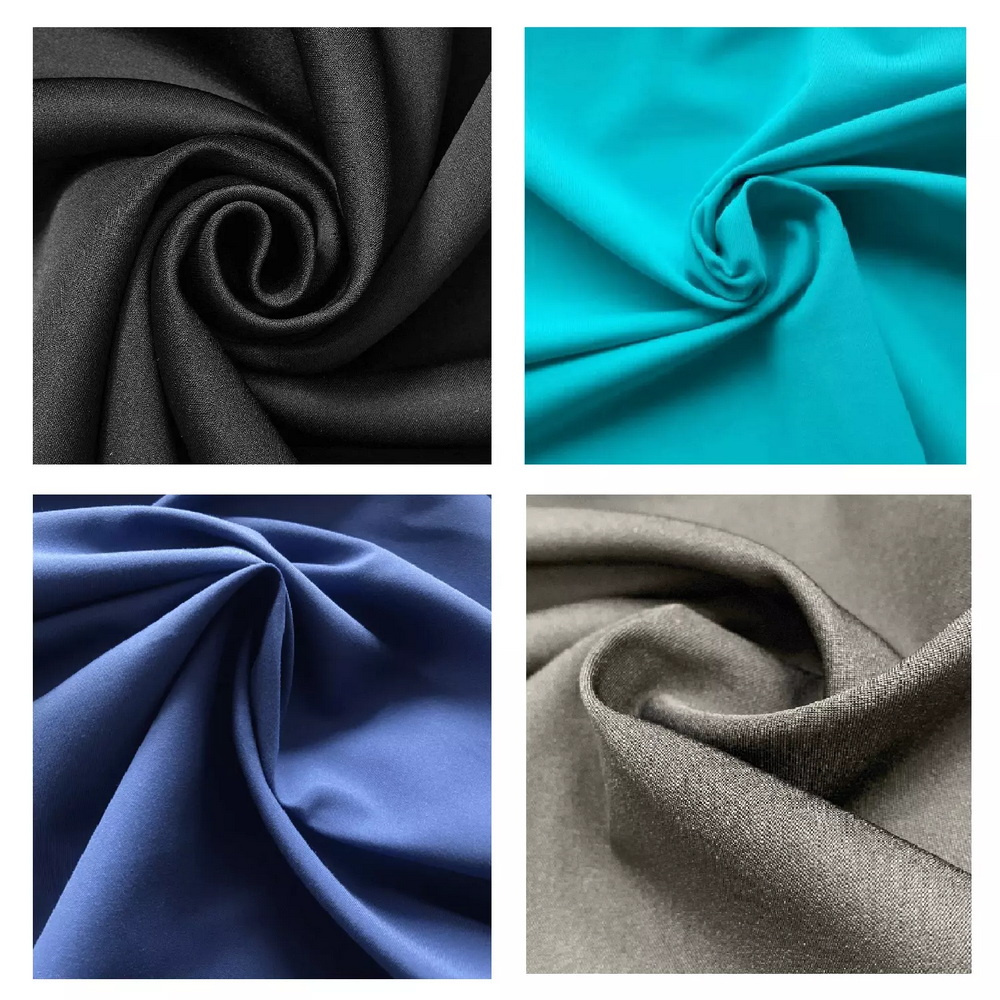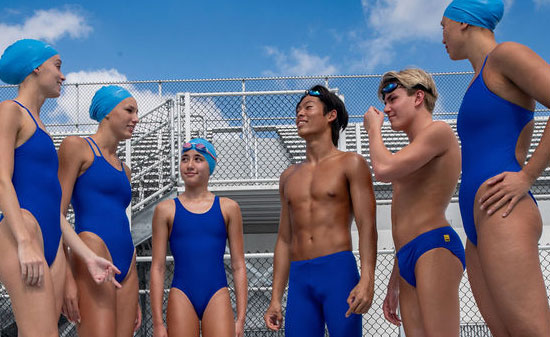Content Menu
● Understanding Swimwear Materials
>> Polyester
>> Nylon
>> Spandex (Elastane)
● Blends of Materials
● Performance Factors Influenced by Material
● Emerging Technologies in Swimwear Fabric
● Choosing the Right Swimwear
● Conclusion
● Frequently Asked Questions
>> 1. What is the most durable material for competitive swimwear?
>> 2. Can I use nylon swimwear for competitive swimming?
>> 3. How do I care for my spandex swimsuit?
>> 4. Are there eco-friendly options for swimwear?
>> 5. What should I look for when choosing a swimsuit fabric?
● Citations:
When it comes to competitive swimming, the choice of swimwear material can significantly impact performance, comfort, and durability. With various options available, understanding the properties of each fabric is crucial for athletes looking to optimize their gear. This article explores the best materials for men's competitive swimwear, detailing their advantages and disadvantages, and providing insights into how they affect swimming performance.
Understanding Swimwear Materials
Swimwear is primarily made from three types of materials: polyester, nylon, and spandex (also known as elastane). Each material has unique characteristics that cater to different swimming needs.
Polyester
Advantages:
- Durability: Polyester is renowned for its strength and longevity. It can withstand extensive use without losing its shape or color, making it ideal for competitive swimmers who train frequently.
- Chlorine Resistance: This material is highly resistant to chlorine, which is essential for swimmers who spend hours in chlorinated pools.
- UV Protection: Polyester provides excellent protection against harmful UV rays, making it suitable for outdoor swimming.
- Quick Drying: It dries faster than many other materials, beneficial for athletes who need to change suits frequently.
Disadvantages:
- Less Stretch: Compared to spandex, polyester has less elasticity, which may affect comfort and fit.
- Initial Cost: High-quality polyester suits can be more expensive upfront but offer long-term savings due to their durability.
Polyester Swimwear
*Polyester swimwear offers durability and chlorine resistance.*
Nylon
Advantages:
- Comfort: Nylon offers a lightweight and smooth fit, making it a popular choice for training suits.
- Quick Drying: Similar to polyester, nylon dries quickly and is comfortable against the skin.
Disadvantages:
- Chlorine Sensitivity: Nylon can degrade over time when exposed to chlorine, making it less suitable for frequent pool use.
- Fading: This material may fade faster when exposed to sunlight compared to polyester.
Nylon Swimwear
*Nylon swimwear is known for its comfort and quick drying properties.*
Spandex (Elastane)
Advantages:
- Elasticity: Spandex provides superior stretch and a snug fit. This elasticity is crucial for competitive swimsuits that need to compress the body effectively.
- Comfortable Fit: Suits made from spandex are often more comfortable due to their flexibility.
Disadvantages:
- Chlorine Resistance: Spandex does not hold up well in chlorine environments and requires careful maintenance.
- Cost: While generally less expensive than polyester suits, high-quality spandex suits can still be a significant investment.
Spandex Swimwear
*Spandex swimwear provides excellent elasticity for a snug fit.*

Blends of Materials
Many competitive swimsuits are made from blends of these materials to optimize performance. Common blends include:
- Polyester-Spandex Blends: These offer the durability of polyester with the stretchiness of spandex, making them ideal for both training and competition. The combination allows swimmers to enjoy enhanced mobility while maintaining the suit's shape over time.
- Nylon-Spandex Blends: Often used in training suits due to their comfort and flexibility but may not last as long in chlorinated environments. These blends provide a soft feel against the skin while allowing for a good range of motion.
Blended Swimwear
*Blended materials combine the best features of different fabrics.*
Performance Factors Influenced by Material
The choice of material not only affects the durability and comfort of swimwear but also plays a crucial role in overall performance. Here are some key performance factors influenced by swimwear material:
1. Drag Reduction: The right fabric can minimize drag in the water. For example, Speedo's LZR Pulse fabric uses microfibers that create a streamlined fit against the body, reducing water resistance. A suit designed with hydrodynamics in mind can lead to faster swim times.
2. Compression: Materials like spandex provide compression that helps improve blood circulation during races. Compression technology can enhance muscle support and reduce fatigue over long distances.
3. Temperature Regulation: Some advanced fabrics are designed to regulate temperature, keeping swimmers comfortable during intense training sessions. Fabrics that wick moisture away from the body help maintain optimal body temperature.
4. Fit and Comfort: The right material ensures a snug yet comfortable fit that allows for maximum mobility. A well-fitted swimsuit reduces chafing and irritation during races.
5. Breathability: Breathable materials allow air circulation while swimming, which can enhance comfort during extended periods in the water.
Emerging Technologies in Swimwear Fabric
In recent years, swimwear technology has advanced significantly. Brands are now integrating smart fabrics into swimsuits that can monitor biometric data such as heart rate or body temperature during races. This data can help athletes optimize their performance strategies by providing real-time feedback on their physical condition.
Additionally, eco-friendly materials are becoming increasingly important in sports apparel manufacturing. Several companies are producing swimsuits made from recycled plastics or sustainable materials without compromising performance standards. These innovations not only help reduce environmental impact but also appeal to environmentally conscious consumers.

Choosing the Right Swimwear
When selecting competitive swimwear, consider the following factors:
1. Purpose of Use:
- Determine whether you need a suit primarily for training or competition. Training suits may prioritize comfort and flexibility, while competition suits focus on speed and drag reduction.
2. Fit Preference:
- Different brands have varying fits; some may be tighter or looser than others. It's essential to try on different styles to find what feels best for your body type.
3. Budget Considerations:
- High-quality swimsuits often come with higher price tags but consider them as an investment in your performance. Look out for sales or discounts from reputable brands.
4. Maintenance Requirements:
- Be aware of how each material reacts with chlorine and sunlight. Proper care will extend the life of your swimsuit significantly.
5. Brand Reputation:
- Research brands known for quality swimwear; read reviews from other swimmers about their experiences with specific models.
Conclusion
Choosing the best material for men's competitive swimwear largely depends on individual needs and preferences. While polyester stands out as the most durable option with excellent resistance to chlorine and UV rays, nylon offers comfort but may fade faster under harsh conditions. Spandex provides superior stretch but requires careful maintenance due to its sensitivity to chlorine.
Ultimately, swimmers should consider their frequency of use, type of swimming (training vs. competition), and swimming environment when selecting swimwear materials. By understanding the characteristics of these fabrics, athletes can make informed decisions that enhance their performance in the water.
Frequently Asked Questions
1. What is the most durable material for competitive swimwear?
- Polyester is considered the most durable material due to its resistance to chlorine and UV rays.
2. Can I use nylon swimwear for competitive swimming?
- While nylon offers comfort and quick drying properties, it may not be suitable for frequent use in chlorinated pools due to its tendency to degrade.
3. How do I care for my spandex swimsuit?
- Rinse your spandex swimsuit in cool water after each use and avoid prolonged exposure to chlorine to maintain its elasticity.
4. Are there eco-friendly options for swimwear?
- Yes, many brands are now producing swimsuits made from recycled materials or sustainable fabrics without compromising on performance.
5. What should I look for when choosing a swimsuit fabric?
- Consider factors such as durability, comfort, elasticity, and resistance to chlorine when selecting a swimsuit fabric that meets your needs.
Citations:
[1] https://www.swimoutlet.com/blogs/guides/understanding-competition-swimsuit-fabrics
[2] https://www.nessswimwear.co.uk/blog/post/chlorine-resistant-swimwear-fabric-guide.html
[3] https://www.abelyfashion.com/what-is-the-best-material-for-competitive-swimwear.html
[4] https://startmakingwaves.com/swim-gear-choosing-right-swimsuit-material/
[5] https://www.bondijoe.com/blogs/mens-swimwear-fabric-technology/best-fabrics-for-mens-swimwear-pros-and-cons
[6] https://www.cheekychickadeestore.com/pages/best-swimsuit-materials
[7] https://www.iom3.org/resource/material-marvels--high-technology-swimwear.html



































